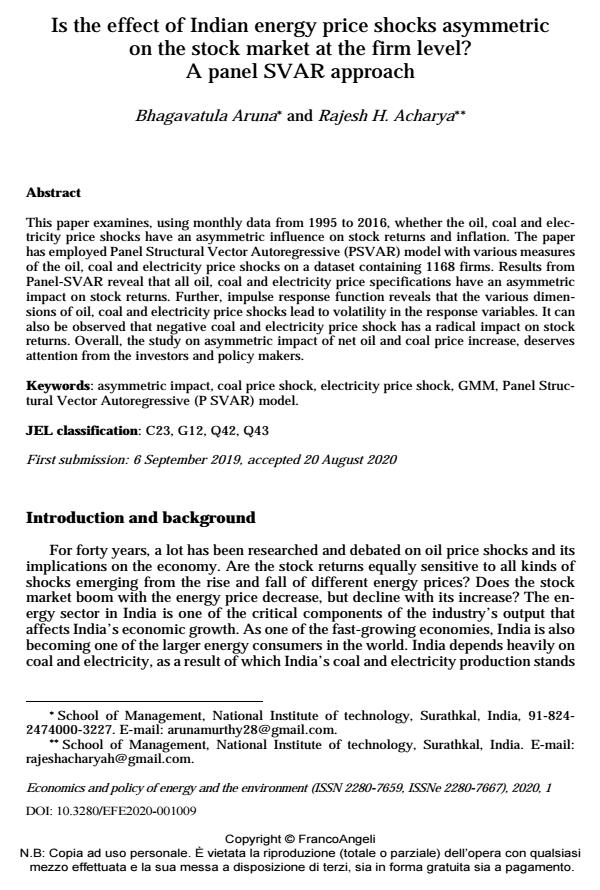Is the effect of Indian energy price shocks asymmetric on the stock market at the firm level? A panel SVAR approach
Journal title ECONOMICS AND POLICY OF ENERGY AND THE ENVIRONMENT
Author/s Bhagavatula Aruna, Rajesh H. Acharya
Publishing Year 2020 Issue 2020/1 Language English
Pages 21 P. 191-211 File size 196 KB
DOI 10.3280/EFE2020-001009
DOI is like a bar code for intellectual property: to have more infomation
click here
Below, you can see the article first page
If you want to buy this article in PDF format, you can do it, following the instructions to buy download credits

FrancoAngeli is member of Publishers International Linking Association, Inc (PILA), a not-for-profit association which run the CrossRef service enabling links to and from online scholarly content.
This paper examines, using monthly data from 1995 to 2016, whether the oil, coal and electric-ity price shocks have an asymmetric influence on stock returns and inflation. The paper has employed Panel Structural Vector Autoregressive (PSVAR) model with various measures of the oil, coal and electricity price shocks on a dataset containing 1168 firms. Results from Pan-el-SVAR reveal that all oil, coal and electricity price specifications have an asymmetric impact on stock returns. Further, impulse response function reveals that the various dimensions of oil, coal and electricity price shocks lead to volatility in the response variables. It can also be ob-served that negative coal and electricity price shock has a radical impact on stock returns. Overall, the study on asymmetric impact of net oil and coal price increase, deserves attention from the investors and policy makers.
Keywords: Asymmetric impact, coal price shock, electricity price shock, GMM, Panel Struc-tural Vector Autoregressive (P SVAR) model.
Jel codes: C23, G12, Q42, Q43
Bhagavatula Aruna, Rajesh H. Acharya, Is the effect of Indian energy price shocks asymmetric on the stock market at the firm level? A panel SVAR approach in "ECONOMICS AND POLICY OF ENERGY AND THE ENVIRONMENT" 1/2020, pp 191-211, DOI: 10.3280/EFE2020-001009